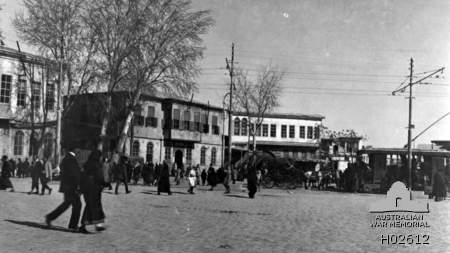|
Tabuk, Saudi Arabia
Tabuk ( ', ) is the capital city of the Tabuk Province in northwestern Saudi Arabia. It has a population of 594,350 (as of 2022). It is close to the Jordan–Saudi Arabia border and houses the largest air force base in Saudi Arabia. History and prehistory The historical place of Midian roughly corresponds to what is now Tabuk Province, region of Tabuk. Tabuk Castle, known as the castle of ''Midian, Aṣ-ḥāb al-Aykah'' ("Companions of the Wood"), is mentioned in the Quran. The castle dates back to about 3500 BCE and has been restored many times; the last was in 1652. Several forts and stations were built along the Syrian pilgrimage route, from the Jordanian border to Medina to welcome the Hajj, pilgrims. The fort consists of two floors built around an open courtyard with a mosque, a well, and a stairway leading to the watch towers used by the guards. Tabuk Castle is considered an archaeological landmark of the region and is open to visitors. Ptolemy mentioned a place by the ... [...More Info...] [...Related Items...] OR: [Wikipedia] [Google] [Baidu] |
List Of Cities And Towns In Saudi Arabia
The following is a list of cities and towns in Saudi Arabia. List of Metro Cities There are 5 large cities or metropolitan area, metro cities in Saudi Arabia with the population over a million or more. Alphabetical list of cities and towns See also * Provinces of Saudi Arabia * List of governorates of Saudi Arabia References Central Department of Statistics and Information {{Portal, Saudi Arabia Lists of cities by country, Saudi Arabia, List of cities and towns in Populated places in Saudi Arabia, * Saudi Arabia geography-related lists, Cities ... [...More Info...] [...Related Items...] OR: [Wikipedia] [Google] [Baidu] |
Arabic Poetry
Arabic poetry ( ''ash-shi‘r al-‘arabīyy'') is one of the earliest forms of Arabic literature. Pre-Islamic Arabic poetry contains the bulk of the oldest poetic material in Arabic, but Old Arabic inscriptions reveal the art of poetry existed in Arabic writing in material as early as the 1st century BCE, with oral poetry likely being much older still. Arabic poetry is categorized into two main types, rhymed or measured, and prose, with the former greatly preceding the latter. The rhymed poetry falls within fifteen different meters collected and explained by al-Farahidi in ''The Science of ‘ Arud''. Al-Akhfash, a student of al-Farahidi, later added one more meter to make them sixteen. The meters of the rhythmical poetry are known in Arabic as "seas" (''buḥūr''). The measuring unit of seas is known as "''taf‘īlah''," and every sea contains a certain number of taf'ilas which the poet has to observe in every verse ('' bayt'') of the poem. The measuring procedure of a p ... [...More Info...] [...Related Items...] OR: [Wikipedia] [Google] [Baidu] |
Nabataean Arabic
Nabataean Arabic was the dialect of Arabic spoken by the Nabataeans in antiquity. In the first century AD, the Nabataeans wrote their inscriptions, such as the legal texts carved on the façades of the monumental tombs at Mada'in Salih, ancient Ḥegrā, in Nabataean Aramaic. It is probable, however, that some or all of them, possibly in varying proportion depending on the region of the Nabataean Kingdom The Nabataean Kingdom (Nabataean Aramaic: 𐢕𐢃𐢋𐢈 ''Nabāṭū''), also named Nabatea () was a political state of the Nabataeans during classical antiquity. The Nabataean Kingdom controlled many of the trade routes of the region, amassin ... where they lived, spoke Arabic. The term ''Nabataean Arabic'' may also refer to the script that succeeded Nabataean Aramaic and preceded Paleo-Arabic. Phonology Consonants Vowels In contrast with Old Hejazi and Classical Arabic, Nabataean Arabic may have undergone the shift < * and < *, as evidenced by the numer ... [...More Info...] [...Related Items...] OR: [Wikipedia] [Google] [Baidu] |
Greek Language
Greek (, ; , ) is an Indo-European languages, Indo-European language, constituting an independent Hellenic languages, Hellenic branch within the Indo-European language family. It is native to Greece, Cyprus, Italy (in Calabria and Salento), southern Albania, and other regions of the Balkans, Caucasus, the Black Sea coast, Asia Minor, and the Eastern Mediterranean. It has the list of languages by first written accounts, longest documented history of any Indo-European language, spanning at least 3,400 years of written records. Its writing system is the Greek alphabet, which has been used for approximately 2,800 years; previously, Greek was recorded in writing systems such as Linear B and the Cypriot syllabary. The Greek language holds a very important place in the history of the Western world. Beginning with the epics of Homer, ancient Greek literature includes many works of lasting importance in the European canon. Greek is also the language in which many of the foundational texts ... [...More Info...] [...Related Items...] OR: [Wikipedia] [Google] [Baidu] |
Thamudic
Thamudic, named for the Thamud tribe, is a group of Epigraphy, epigraphic scripts known from large numbers of inscriptions in Ancient North Arabian (ANA) alphabets, which have not yet been properly studied. These texts are found over a huge area from southern Syria to Yemen. In 1937, Fred V. Winnett divided those known at the time into five rough categories A, B, C, D, E. In 1951, some 9,000 more inscriptions were recorded in south-west Saudi Arabia which have been given the name Southern Thamudic. Thamudic A is now known as Taymanitic. Thamudic E is now known as Hismaic. Southern Thamudic is also known as Thamudic F. Varieties Thamudic B The Thamudic B inscriptions are concentrated in Northwest Arabia, but can be occasionally found in Syria, Egypt, and Yemen. Thamudic C The Thamudic C inscriptions are concentrated in the Najd, but can be found elsewhere across western Arabia as well. They typically contain the word ''wdd'', of unknown meaning. Thamudic D Thamudic D i ... [...More Info...] [...Related Items...] OR: [Wikipedia] [Google] [Baidu] |
Scud Missile
A Scud missile is one of a series of tactical ballistic missiles developed by the Soviet Union during the Cold War. It was exported widely to both Second and Third World countries. The term comes from the NATO reporting name attached to the missile by Western intelligence agencies. The Russian names for the missile are the R-11 (the first version), and the R-17 (later R-300) Elbrus (later developments). The name Scud has been widely used to refer to these missiles and the wide variety of derivative variants developed in other countries based on the Soviet design. Scud missiles have been used in combat since the 1970s, mostly in wars in the Middle East. They became familiar to the Western public during the 1991 Persian Gulf War, when Iraq fired dozens at Saudi Arabia and Israel. In Russian service, it has been replaced by the 9K720 Iskander. Development The first use of the term ''Scud'' was in the NATO name SS-1b Scud-A, applied to the R-11 Zemlya ballistic missile. The ... [...More Info...] [...Related Items...] OR: [Wikipedia] [Google] [Baidu] |
Gulf War
, combatant2 = , commander1 = , commander2 = , strength1 = Over 950,000 soldiers3,113 tanks1,800 aircraft2,200 artillery systems , page = https://www.govinfo.gov/content/pkg/GAOREPORTS-PEMD-96-10/pdf/GAOREPORTS-PEMD-96-10.pdf , strength2 = 1,000,000+ soldiers (~600,000 in Kuwait)5,500 tanks700+ aircraft3,000 artillery systems , casualties1 = Total:13,488 Coalition:292 killed (147 killed by enemy action, 145 non-hostile deaths)776 wounded (467 wounded in action)31 tanks destroyed/disabled28 Bradley IFVs destroyed/damaged1 M113 APC destroyed2 British Warrior APCs destroyed1 artillery piece destroyed75 aircraft destroyedKuwait:420 killed 12,000 captured ≈200 tanks destroyed/captured 850+ other armored vehicles destroyed/captured 57 aircraft lost 8 aircraft captured (Mirage F1s) 17 ships sunk, 6 captured. Acig.org. Retrieved on 12 June 2011 , casualties2 = Total:175,000–300,000+ Iraqi:20,000–50,000 killed ... [...More Info...] [...Related Items...] OR: [Wikipedia] [Google] [Baidu] |
Oxford University Press
Oxford University Press (OUP) is the publishing house of the University of Oxford. It is the largest university press in the world. Its first book was printed in Oxford in 1478, with the Press officially granted the legal right to print books by decree in 1586. It is the second-oldest university press after Cambridge University Press, which was founded in 1534. It is a department of the University of Oxford. It is governed by a group of 15 academics, the Delegates of the Press, appointed by the Vice Chancellor, vice-chancellor of the University of Oxford. The Delegates of the Press are led by the Secretary to the Delegates, who serves as OUP's chief executive and as its major representative on other university bodies. Oxford University Press has had a similar governance structure since the 17th century. The press is located on Walton Street, Oxford, Walton Street, Oxford, opposite Somerville College, Oxford, Somerville College, in the inner suburb of Jericho, Oxford, Jericho. ... [...More Info...] [...Related Items...] OR: [Wikipedia] [Google] [Baidu] |
Capture Of Damascus (1918)
The Capture of Damascus occurred on 1 October 1918 after the capture of Haifa and the victory at the Battle of Samakh which opened the way for the pursuit north from the Sea of Galilee and the Third Transjordan attack which opened the way to Deraa and the inland pursuit, after the decisive Egyptian Expeditionary Force (EEF) victory at the Battle of Megiddo during the Sinai and Palestine campaign of World War I. Damascus was captured when Indian Brittish troops under general Barrow, the Desert Mounted Corps under general Chauvel, Prince Faisal's Sharifial Hejaz Army and an Arab army under Sharif Nasir of Medina encircled the city. Faced with this superior force, the German and Turkish troops in the city surrendered very quickly. During the pursuit to Damascus, many rearguards established by remnants of the Ottoman Fourth, Seventh and Eighth Armies were attacked and captured by Prince Feisal's Sherifial Army and the Desert Mounted Corps' Australian Mounted Divisio ... [...More Info...] [...Related Items...] OR: [Wikipedia] [Google] [Baidu] |
Charles Montagu Doughty
Charles Montagu Doughty (19 August 1843 – 20 January 1926) was a British poet, writer, explorer, adventurer and traveller, best known for his two-volume 1888 travel book '' Travels in Arabia Deserta''. Early life and education Son of Rev. Charles Montagu Doughty, of Theberton Hall near Saxmundham, Suffolk, and Frederica Beaumont Hotham, daughter of Rev. the Hon. Frederick Hotham, of Dennington, Suffolk (son of the judge and politician Beaumont Hotham, 2nd Baron Hotham), Doughty was born at Theberton Hall and educated at private schools in Laleham and Elstree and at a school for the Royal Navy, Portsmouth. He was a student at King's College School, Wimbledon, and went up to Gonville and Caius College, Cambridge, migrating to Downing College, Cambridge, from which he took a BA in 1866, then taking an MA from Caius in 1869. Career Doughty is best known for his 1888 travel book '' Travels in Arabia Deserta'', a work in two volumes that, although it had little immediate influ ... [...More Info...] [...Related Items...] OR: [Wikipedia] [Google] [Baidu] |
Muhammad
Muhammad (8 June 632 CE) was an Arab religious and political leader and the founder of Islam. Muhammad in Islam, According to Islam, he was a prophet who was divinely inspired to preach and confirm the tawhid, monotheistic teachings of Adam in Islam, Adam, Noah in Islam, Noah, Abraham in Islam, Abraham, Moses in Islam, Moses, Jesus in Islam, Jesus, and other Prophets and messengers in Islam, prophets. He is believed to be the Seal of the Prophets in Islam, and along with the Quran, his teachings and Sunnah, normative examples form the basis for Islamic religious belief. Muhammad was born in Mecca to the aristocratic Banu Hashim clan of the Quraysh. He was the son of Abdullah ibn Abd al-Muttalib and Amina bint Wahb. His father, Abdullah, the son of tribal leader Abd al-Muttalib ibn Hashim, died around the time Muhammad was born. His mother Amina died when he was six, leaving Muhammad an orphan. He was raised under the care of his grandfather, Abd al-Muttalib, and paternal ... [...More Info...] [...Related Items...] OR: [Wikipedia] [Google] [Baidu] |







